Quick Facts About Used Honda Civics
- We can confidently say that, beginning 2012 to current models, it is among the best years to buy a used Honda Civic.
- The Honda Civic holds its value better than any other compact car.
- Civics boast an almost unblemished record of reliability.
- Honda sold its first Civic in North America in 1972.
Picking the best model year or years for the Honda Civic is more subjective than objective because what is the yardstick for measuring the best years? For starters, it must weigh recalls, safety ratings, and customer complaints. We will provide the best years of the Honda Civic, and there are many to consider. Honda Civics retain their value, making them a solid choice when considering a used vehicle. Read on to find out more.
- Best Honda Civic Model Years
- Which Honda Civic Should You Buy?
- Are Honda Civics Reliable?
- Should You Buy a Used Honda Civic?
Best Honda Civic Model Years
We can confidently say that beginning with 2012, the most recent generations boast an almost unblemished record of reliability. The public’s disdain for the 2012 Civic notwithstanding, it and the following 12 model years represent the Civic’s highwater mark for reliability.
The nonprofit Insurance Institute for Highway Safety (IIHS) added the Honda Civic to either its Top Safety Pick or Top Safety Pick+ list in 2006, 2009-2017, and 2020-2024.
See Honda Civic models for sale near you.
Which Honda Civic Should You Buy?
Some say that timing is everything. That has never been truer than the Honda Civic’s 1972 debut on the North American stage. Arriving on our shores just as the oil troubles of the 1970s were looming on the horizon, the fuel-stingy Civic immediately captured America’s attention, quickly winning its loyalty. Decades of years later, the 11th-generation Honda Civic continues to impress the masses with its affordable prices, user-friendliness, comfort, reliability, safety, and fuel economy.
We have assembled a generation-by-generation picture of the Civic’s progress over the years, including key information you should know before buying a used one, whether privately or at a dealership.
RELATED: Private Seller vs. Dealer When Buying a Used Car
11th Generation (2022-present)
Honda walked back the styling of its last generation model a bit for the current one, sanding off some of the sharp angles and filling in some of the crevasses. The cabin received a good sprucing up, as well, with some higher-quality materials and a shift lever positioned closer to the driver. Honda offers Civic in sedan and hatchback configurations. There are no changes to the engines. However, only a continuously variable automatic transmission (CVT), is available in the mainstream trims sedan. Honda dumped the coupe; consequently, the Si comes only as a sedan. It uses the same engine but with five fewer horsepower than the previous Si. The Type R is also a sedan, making 315 hp delivered to the drive wheels via a 6-speed manual transmission.
See 2022 to current Honda Civics for sale near you.
10th Generation (2016-2021)
Those disappointed with the ninth generation, found in the 10th-generation Civic a return to exceeding expectations. The exterior styling eschewed the rather plain conventional form of the previous generation for lots of creases, swoops, and other surface transitions that reflected light and turned heads. Initially launched as just a 4-door sedan and a 4-door hatchback, a 2-door coupe soon followed. Handling took a turn toward the sporty, while the powertrain lineup was a 158-hp 4-cylinder and an optional 174-hp turbocharged 4-cylinder. An Si version arrived in 2017, as a 4-door sedan or a 2-door coupe, featuring adaptive dampers and a 205-hp version of the 4-cylinder turbo. Arriving in 2018, the Civic Type R with its turbo 4-cylinder, delivered 306 hp.
See 2016 to 2021 Honda Civics for sale near you.
Ninth Generation (2012-2015)
For the only time in its remarkable history, the release of the 2012 Honda Civic became a disappointment. Pick a category (powertrains, styling, interior quality), the public’s — and more importantly, Civic enthusiasts’ — collective reaction ranged from lukewarm yawns to highly incensed fist shaking. So shocked was Honda with the outcry, it sprang into action, releasing a midcycle, thoroughly refreshed Civic for 2013. With it came a stiffer suspension for improved handling, quicker steering response, higher-quality interior materials, and an updated center stack.
In reality, the 2012 model wasn’t bad. It just failed to meet the expectations of another generational leap forward. However, the stigma of the original reaction hurried the release of the 10th generation.
See 2012 to 2015 Honda Civics for sale near you.
Eighth Generation (2006-2011)
Radically redesigned for 2006, the Civic’s bubble-like exterior shape is a departure from the staid look of the previous generation. Because Honda kicked the hatchback to the curb, the Si was now in coupe form, delivering 197 hp through an optional 6-speed manual transmission. In fact, Honda goosed the performance of the entire Civic engine lineup. Honda added the Si sedan in 2007. The Insurance Institute for Highway Safety (IIHS) issued its first Top Safety Pick Silver and Top Safety Pick Gold (more recently Top Safety Pick and Top Safety Pick+) awards in 2006. It named the 2006 Civic to the Gold list.
See 2006 to 2011 Honda Civics for sale near you.
Seventh Generation (2001-2005)
In its march toward more traditional fare, Honda jettisoned its popular double-wishbone suspension for a MacPherson strut arrangement in front for a more cushiony ride. The 4-cylinder base engine now generated 117 hp in lower trims and 127 hp in the EX. Honda reintroduced a coupe in 2001. This generation’s edition of the Si was in the form of a 3-door hatchback. Assembled in Great Britain, its 4-cylinder engine delivered 160 hp. Providing a degree of balance to the Civic lineup, Honda introduced the first Civic hybrid model in 2003.
See 2001 to 2005 Honda Civics for sale near you.
The Honda Civic’s Early Years: Generations 1-6 (1972-2000)
Now in its 11th generation, the Honda Civic’s history traces far enough back that the likelihood of a shopper seeking to buy an early model is slim. Therefore, we’ve lumped together the first six generations, providing only the most significant highlights.
1973 to 1979

After two years of development, the first Honda Civic 2-door sedan and 3-door hatchback rolled into U.S. showrooms in 1972. It was small even when compared to domestic fuel savers like the Ford Pinto. Measuring between a measly 126 inches to 130 inches in overall length, it was more than a foot shorter than today’s Mazda MX-5 Miata. Pumping out 50 horsepower, the small, inline 4-cylinder engine sent output to the 12-inch front wheels via a manual 4-speed transmission or an optional 2-speed automatic. Honda priced it at about $2,000. Although Honda updated the Civic’s engine during the first generation, like the CVCC engine in 1975, output for these years never exceeded 55 hp. By 1977, Honda was selling 100,000 Civics in the United States.
1980 to 1987

Honda didn’t have much time to make improvements during the reign of the second-generation Civic. It only lasted from 1980-1983. A 4-door sedan, a wagon, and the sporty Civic S were added to the model lineup. Launched in 1984, the third generation was destined to last just three years. Notable during this brief period is the introduction of the 2-seat sporty CRX. Honda also amped things up with a second Civic S iteration boasting 85 hp. The following year, Honda introduced the CRX Si with 91 hp — the quickest Civic to date. In another ground-breaking move, Honda added an all-wheel drive option for the high-top-sneaker-looking Civic Wagon that activated with the push of a button. Honda began assembling Civics in Ohio in 1986.
1988 to 2000
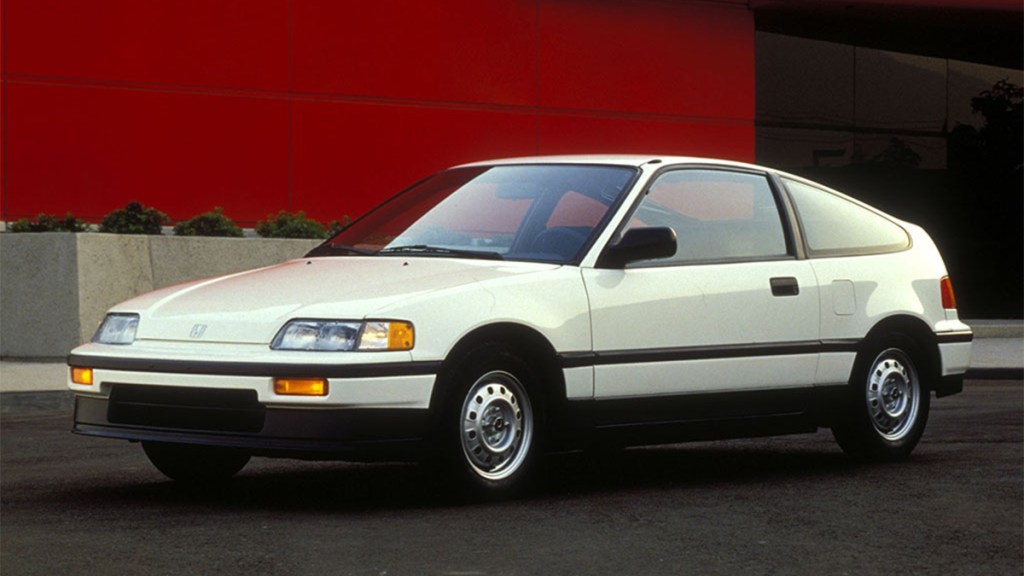
The year 1988 rang in the fourth generation, with the performance CRX hogging most of the attention with a top output of 105 hp. Generally, the Civic lineup received serious styling updates, and fuel injection became standard, as well. The fifth generation arrived in 1992 with serious suspension enhancements and rounder exterior lines. The two-seat del Sol, with its removable roof panel, replaced the CRX. This generation also marks the widespread use of Honda’s variable valve timing (VTEC), boosting power. Dual-front airbags became a standard feature in 1994.
Honda began straying from its sporty focus with the coming of its sixth generation in 1996. The four-door configuration dominated during this period. Moreover, there wasn’t a CRX or Si in the bunch until 1999, and the del Sol disappeared along the way, too. Retreating toward the mold of more traditional brands, the sixth-generation Civic began arranging the stage for today’s more conservative Civic.
Are Honda Civics Reliable?
Overall, the Honda Civic holds its value better than any other mainstream compact car, with much better-than-average resale value. Honda, generally, and the Civic, particularly, earned a reputation for reliability and durability, which is a major contributor to the Civic’s impressive resale value. No car is without an issue here or there. However, Civic’s complaints are relatively few and far between.
According to RepairPal, the most reported Civic problem over the years up to and through 2015 concerns damaged engine mounts. These can cause vibrations and rattles. Covering model years 1990 through 2016, power-window switches can fail, which may prevent windows from opening or closing. An illuminated airbag light often translates into a defective occupant position sensor. Honda does have an ongoing recall for the affected model years: 1996 and 2001-2016. Although these are the most reported issues by owners, they involve a percentage of Civics nearly too small to measure.
PRO TIP: Before buying any used car, we recommend checking for recalls. You can do that with the car’s Vehicle Identification Number (VIN) by heading to our sister site, Kelley Blue Book, and researching recalls.
Worst Honda Civic Model Years
Looking at the Honda Civic recall history, 2001-2011 was a particularly troublesome decade. However, this was during the industry-wide Takata airbag recall involving millions of models from various manufacturers. Most other owner complaints, even those previously mentioned in this article, involved less than 1% of Civics during those model years. It’s only logical that the farther back you go in model years, the more likely you will encounter repair or replacement issues. From a purely aesthetics standpoint, we’d avoid the 2012 model year.
Should You Buy a Used Honda Civic?
Yes, you should buy a used Honda Civic with reasonable miles and in good condition. As one of the more reliable cars on the road, it should provide years of service. However, as with any used vehicle, you should check its vehicle history report through AutoCheck, Carfax, or a similar vehicle history service. We also recommend getting any used car you are considering inspected by a trained technician.
RELATED: What Is More Important When Buying a Used Car: Miles or Age?
Honda Civic vs. Honda Accord
Born to address the Civic’s small-size issue with American consumers, the first Honda Accord landed in 1976 as a 1977 model. Generally, the Accord is a bit larger, with more passenger and cargo space. Its engines are more powerful, too. Like the Civic, the Accord has a solid record of IIHS TSP and TSP+ awards. If you want more car than the Civic, the Accord makes sense.
Honda Civic vs. Toyota Camry
As with the Honda Accord, for the most part, the Toyota Camry provides more interior space and stronger powertrains at a higher price point than the Honda Civic. And like the Accord, the Camry offered a V6 option for most model years. A hybrid powertrain notwithstanding, the Civic’s bread-and-butter powertrains are 4-cylinder. The Camry has been an IIHS TSP or TSP+ every year since 2011.
RELATED: Buying a Used Toyota Camry: Everything You Need to Know
Honda Civic vs. Toyota Corolla
Although today’s Civic is a tad longer and offers more rear-seat legroom than the Toyota Corolla, they are comparable in size. Toyota has sold more Corolla units during the past 50 years than any other car, ever. It’s been on sale in the U.S. since 1968 as a 1969 model.
Civic is somewhat better at holding its value, which makes the average used Civic a bit more expensive than the average used Corolla. With Toyota sharing Honda’s reputation for reliability, the Civic and the Corolla are serviceable for years. The IIHS has also recognized the Corolla as a TSP or TSP+ nearly every model year since 2009.

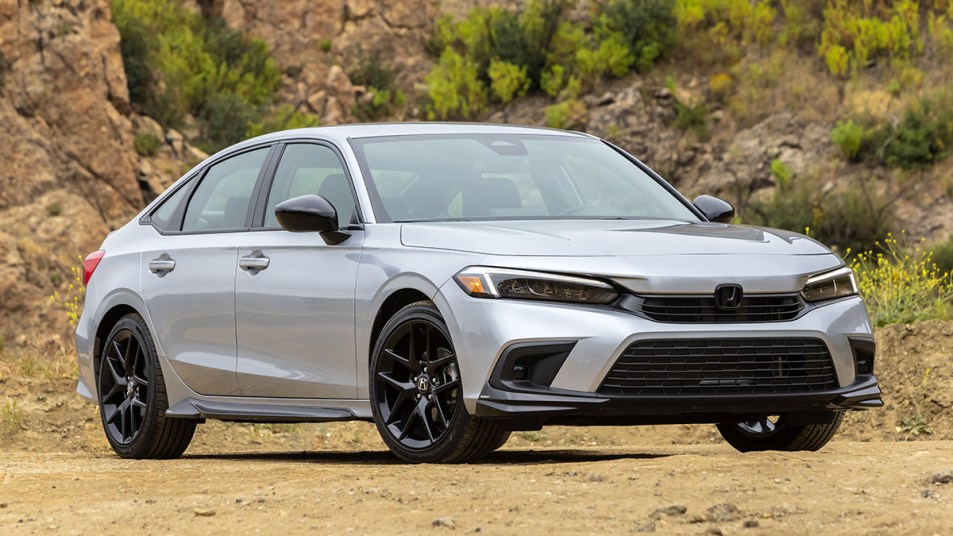

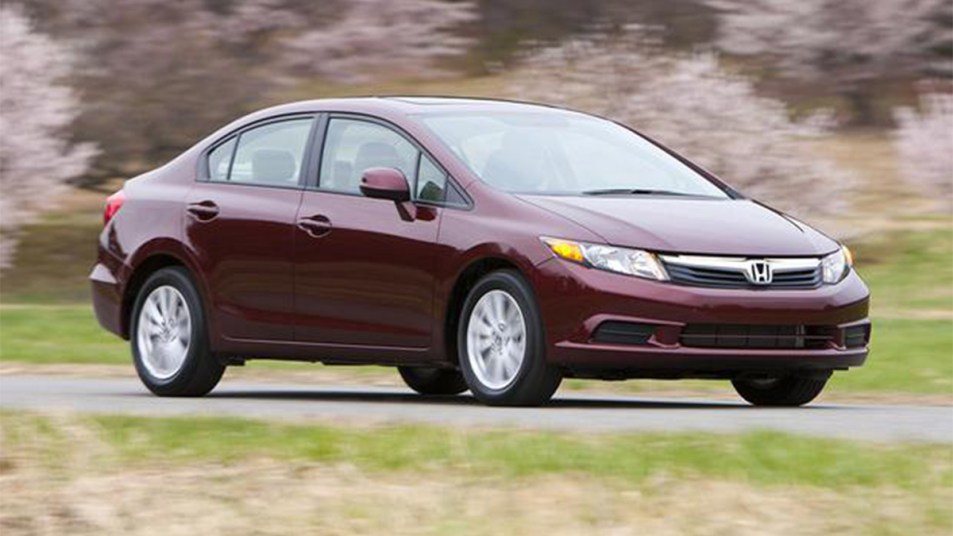
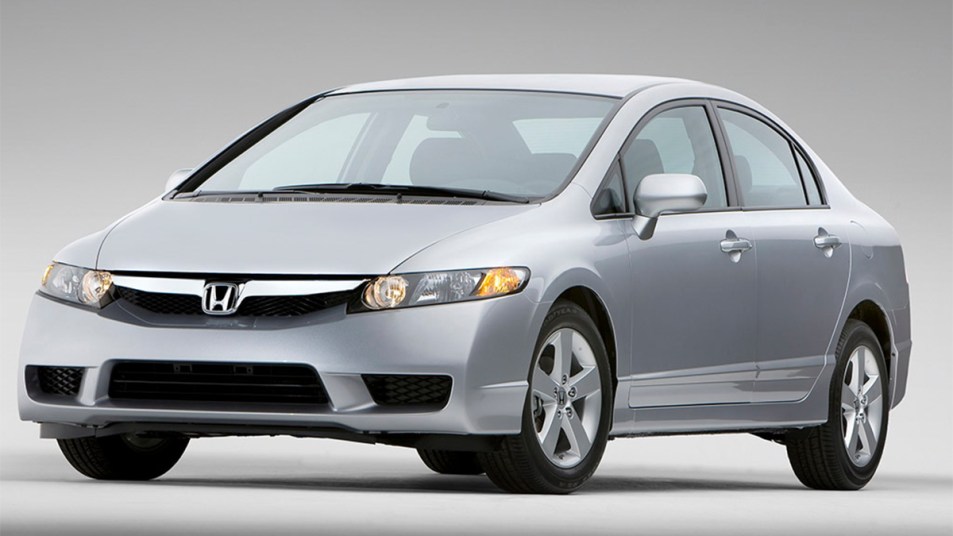
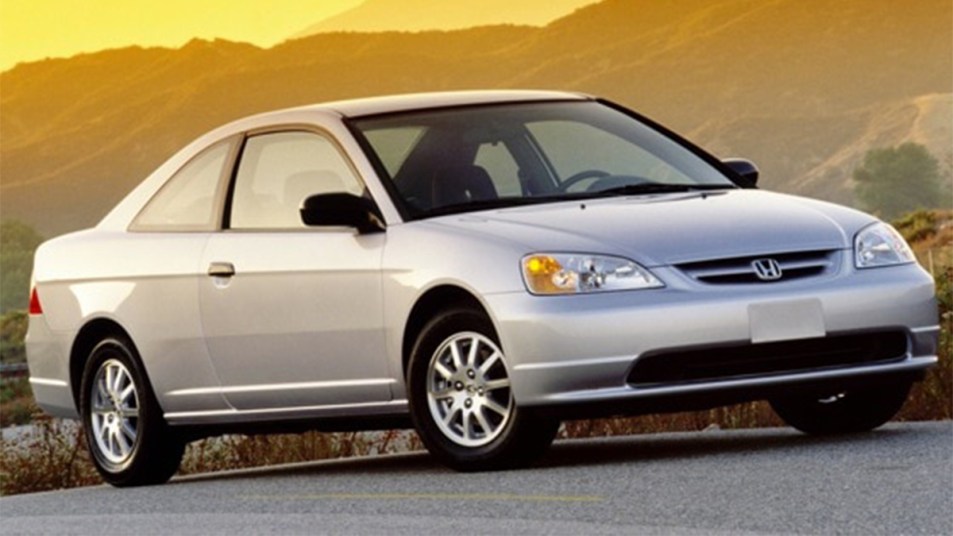










Don’t buy a Honda.Honda knew about their 2006 engine block problem in 2007 and never issued a recall They took the escape route and made it look like they cared and extending the warranty to 10 years knowing it would save the $$$$. It has nothing to do with the age of the engine, it has to do with use There are no moving parts in the block to cause this anti freeze leak I have a 2016 with less the 60,000 miles / 92,000 km with a cracked block Honda’s answer to bad you loose throw your car away as a new engine will cause more the the car resale value.